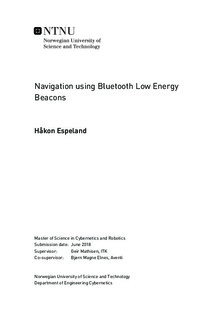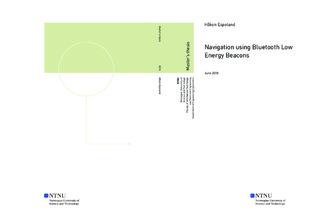| dc.description.abstract | The wireless techonology Bluetooth has over the years become more commonly supported by personal electronic devices, especially in smart-devices such as smartphones, tablets and smart-watches. Earlier, Bluetooth was mostly used as wireless communication between personal devices, and not between personal and public Bluetooth peripherals. When Bluetooth version 4.0, also called Bluetooth Low Energy (BLE) was introduced in 2010, the development of light-weight, easy-deployable Bluetooth Beacons emerged. This development opened up for using public Bluetooth peripherals to interact with personal devices, broadcasting information to compatible units within close proximity. This report is a result of researching the functionality found within the Bluetooth Low Energy protocol, and by using available frameworks, design and implement a navigation system into an Android mobile application that uses interaction with Bluetooth Beacons for determining its position.
Integrating Android, BLE Beacon libraries, Cloud Services and relevant positioning prin- cipals, a navigation system is developed and implemented in the Android application, ePark, as a part of a parking service, providing navigation inside a parking garage. Us- ing the Eddystone UID framework developed by Google, a smartdevice running ePark continously interacts with nearby BLE Beacons. The calculated Received Signal Strength Indication (RSSI) of each beacon are passed into a position algorithm along with the known coordinates of each beacon, having the algorithm calculate the smartdevice s current position.
Positioning principals like Cell Identification and Trilateration are implemented into the position algorithm to evaluate the performance of a bluetooth navigation system which is based on RSSI-measurements. Imprecision in RSSI measurements are seen to directly affect the positioning algorithm, and the achieved accuracy is approximately 5 meters when using trilateration. | |

